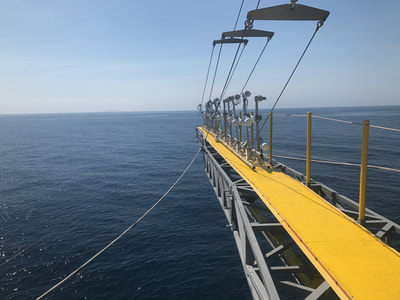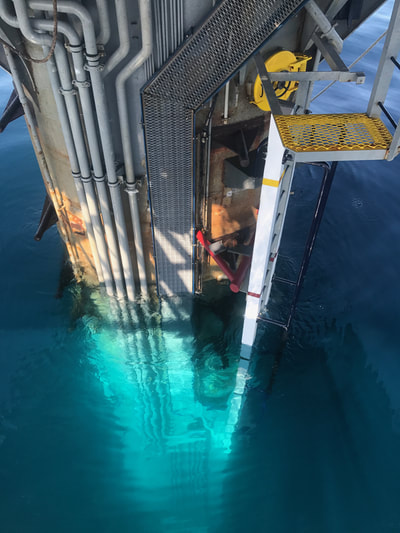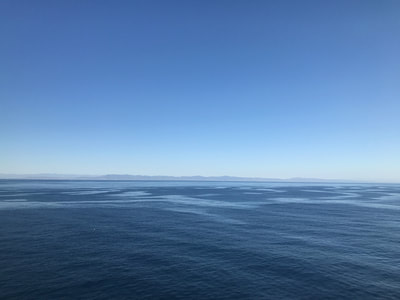|
The 22nd day of September through the 25th day of October, this year two thousand and seventeen. Dates that I do not think I will easily forget, though at this point they nearly exist in my memory as a single coagulated mass. These dates mark the time I spent about the Floating Instrument Platform (FLIP), which is now "owned" by ONR, but run out the Scripps Institution of Oceanography, as part of the CASPER project and as the first significant action at my new post at the Naval Postgraduate School working under Professor Qing Wang. It's quite a thing to have to be at sea on FLIP, get up to speed on a completely new and vastly complex project, all the while try to make a decent first impression with your-now-colleagues. Typically, close and confined quarters are not the optimal location for showing your best side, especially when those close and confined quarters are aboard a ship. For my part, this was an amazing experience and I was humbled to be able to work on one of the most regarded research vessels/platforms in the oceanographic and atmospheric community. Not only was the experience of being aboard FLIP unique, but I was very excited to be apart of CASPER and the prospect of working on this project is very intriguing. For the uninitiated, FLIP is not a ship. It is a platform that looks like a 100+ m long pipe attached to the stern of research vessel that looks like it was cut-off at the knees and put in a trash compactor. This platform lacks any ambulatory capability and is towed out to the study site and then flipped. The flipping takes a while to go from horizontal to ~50 degrees, and about 30 seconds to go from 50 degrees to vertical. When all is said and done, FLIP looks like some abstract artist's nautical rendition probing the folly's of man and oceanographic exploration.
When FLIP is flipped, the cats come out of the bag and everyone (crew+science) scramble to set-up the platform (lower the booms), unpack the gear (the crew of FLIP said that the CASPER-amount of gear was the most scientific equipment they've seen on a research cruise, ever), and set-up the sensors. All of this is done across 4 vertically stacked decks, connected using almost vertical death ladders that enjoy being slippery, steel grating, and a useable floor space about the size of my 1400 sq ft. apartment's living room---keep in mind 4 separate research groups are trying to work all at the same time. When everything is installed, FLIP must looks the most alien of sites bursting out of the ocean. No wonder every passerby from helicopters, tanker ships, weekend warrior sport fishermen, and two old chaps looking for the "Santa Monica basin buoy' cruises by for a gander. And that's just the setting up..... All-in-all, it was a fascinating 6 weeks and I do truly hope I can go aboard FLIP again. From a research perspective, there is no other platform that exists for scientific observation that can give you the same opportunity to measure actual geophysical processes with such minimal contamination as FLIP. During CASPER, our group and others were making laboratory-esque measurements in real oceanic and atmospheric conditions. At some points, one almost forgets that we were at sea.
0 Comments
Your comment will be posted after it is approved.
Leave a Reply. |
Archives
January 2023
Categories |
Proudly powered by Weebly









 RSS Feed
RSS Feed